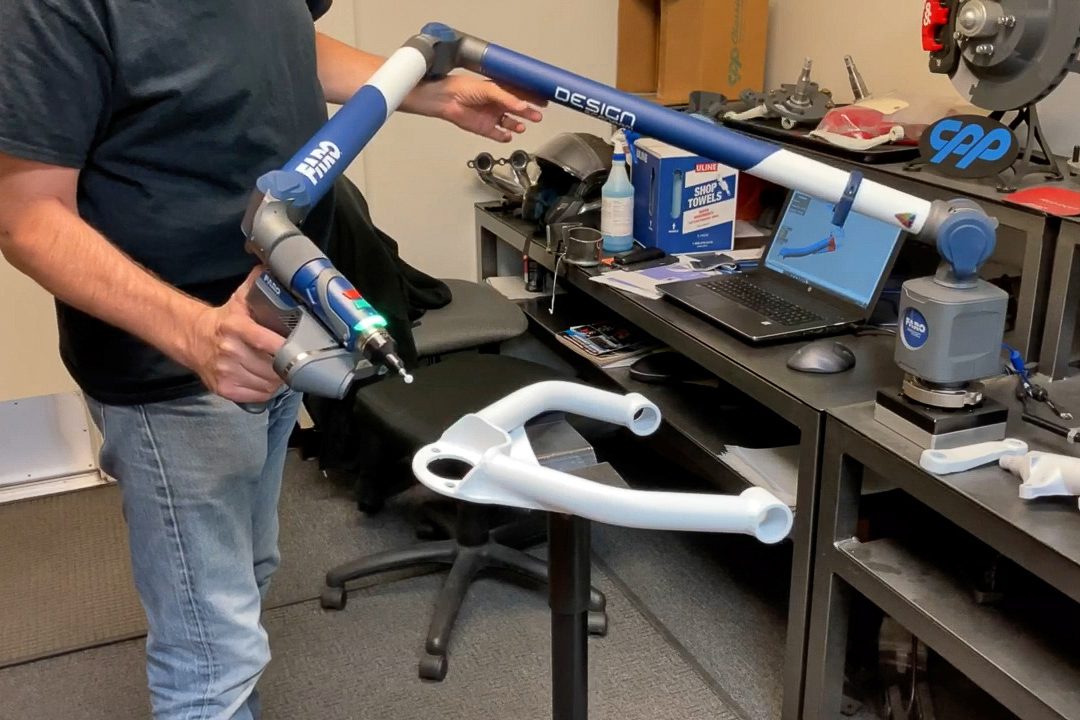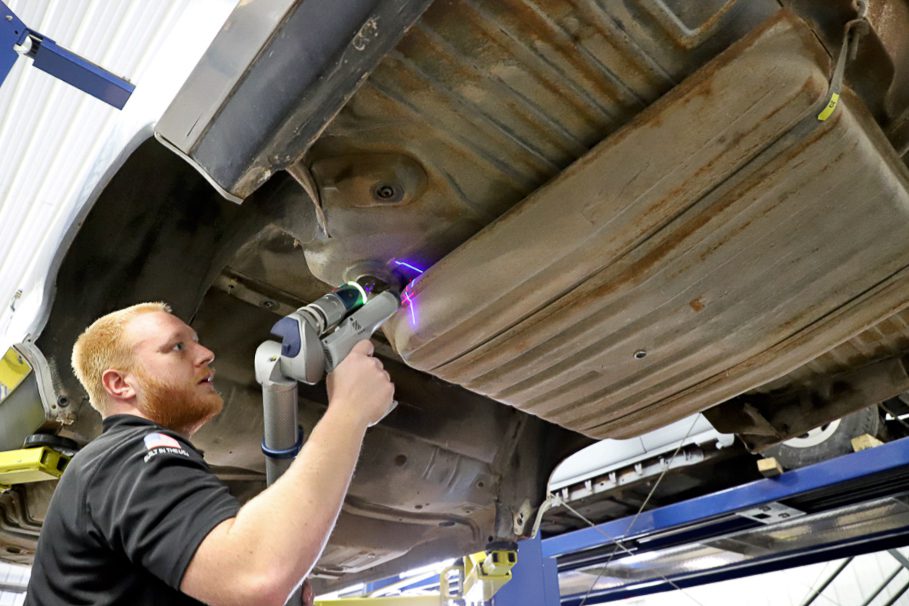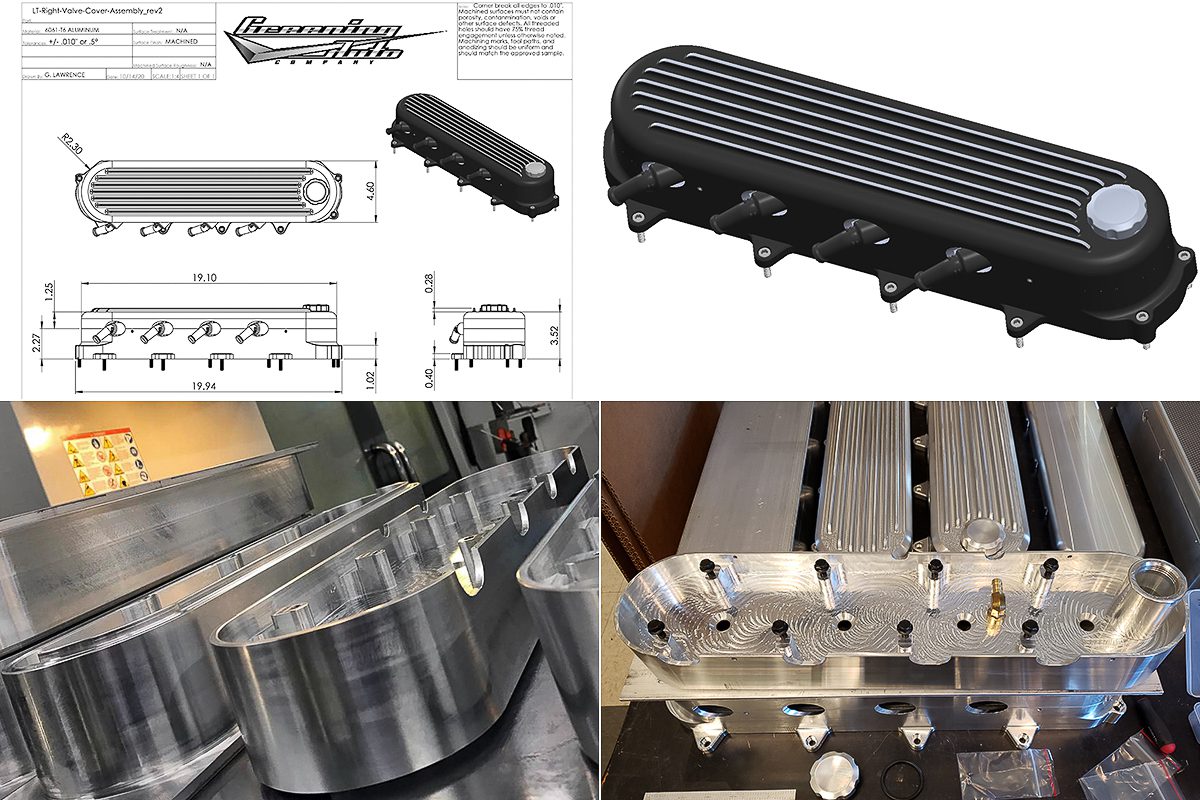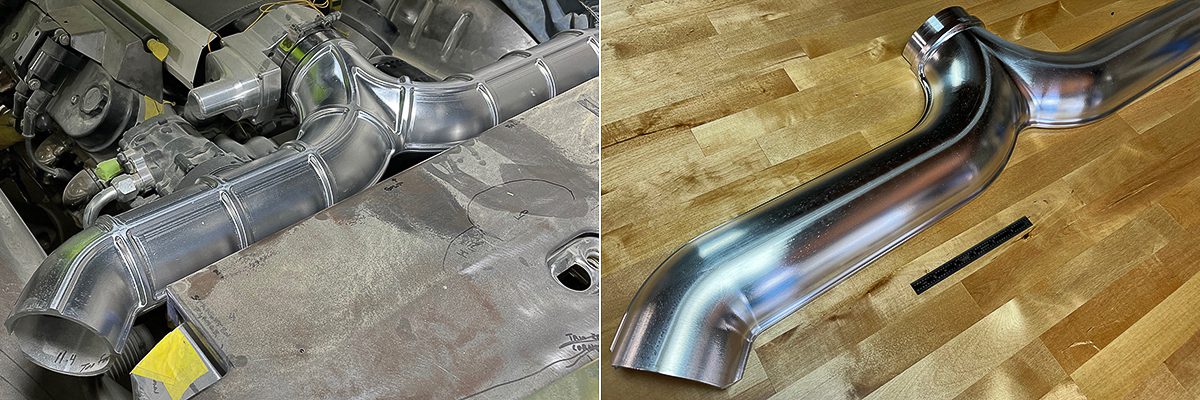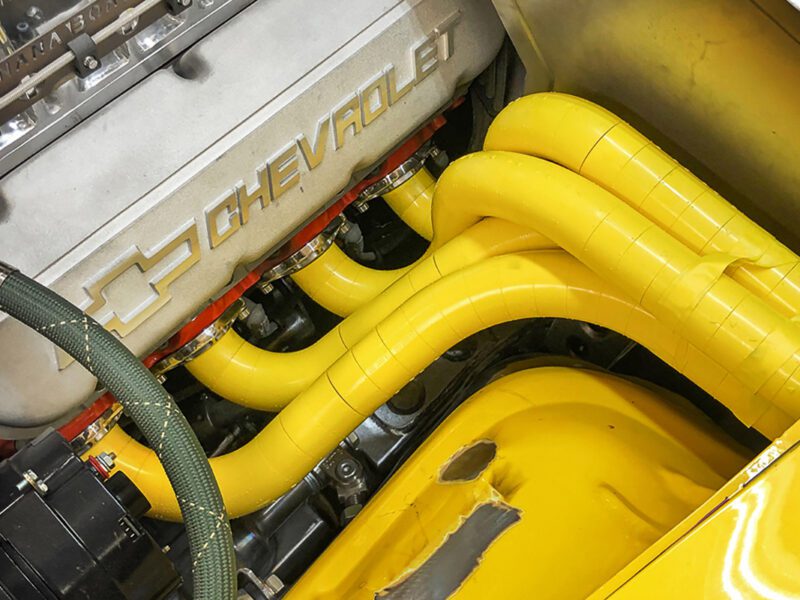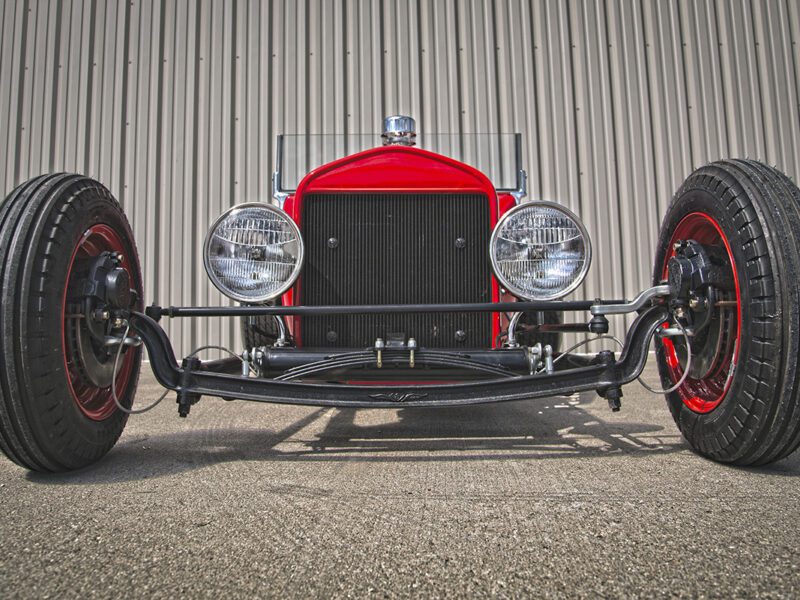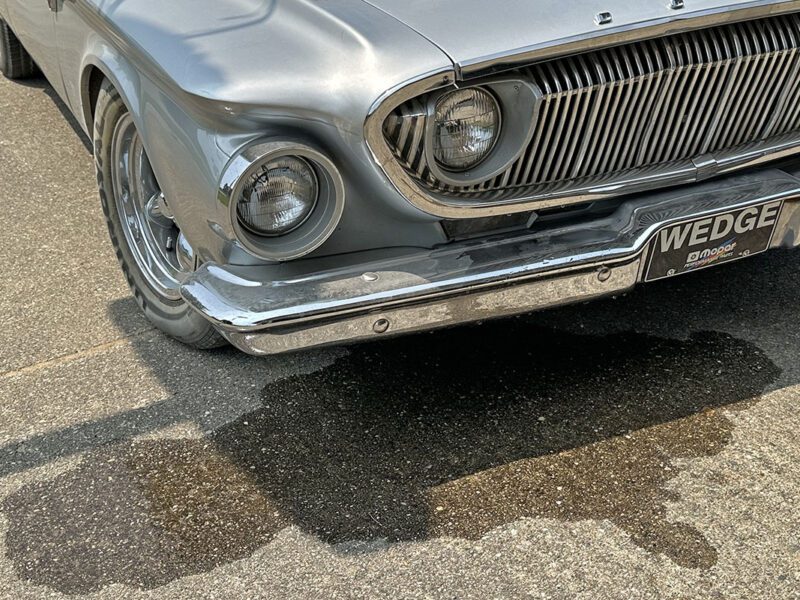Scan, Model, Print, Machine – How Modern Technology is Changing the Way Hot Rods – and Parts – Are Built
When many of us think about building a hot rod, custom, or street machine, we envision traditional processes of turning wrenches in a garage or welding and shaping steel in a fabrication shop. We think of time-honored tools, greasy work environments, and noisy manual procedures driven by chugging air compressors. 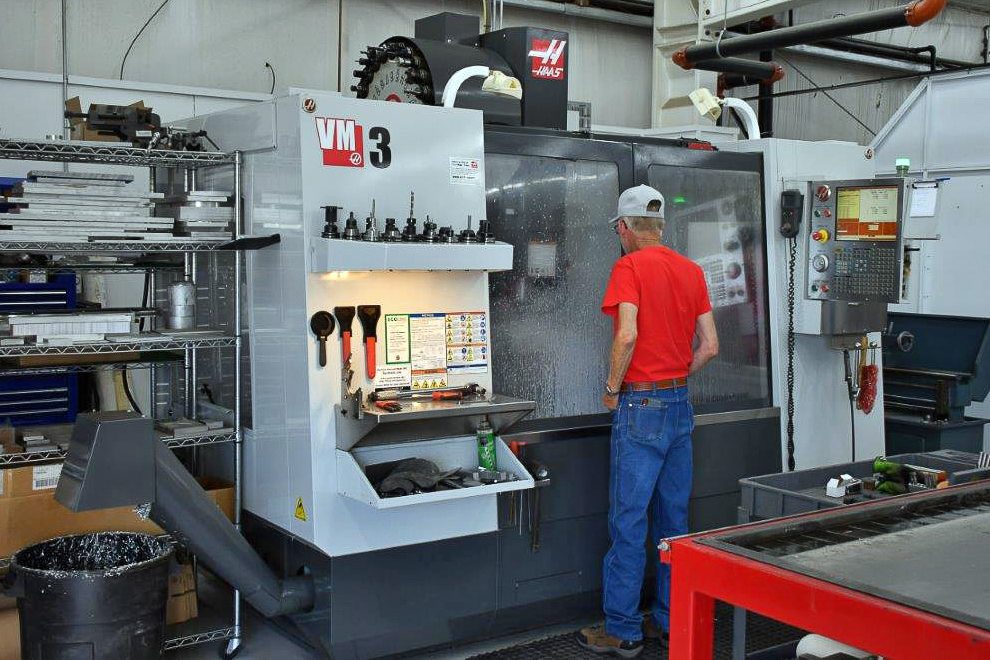 In today’s hot rod building world, however, new technologies are increasingly being used to build and fabricate the one-off parts and hard-to-find pieces that go into top-level custom creations.
In today’s hot rod building world, however, new technologies are increasingly being used to build and fabricate the one-off parts and hard-to-find pieces that go into top-level custom creations.
Yes, while the soul of hot rodding is firmly rooted in the past, builders and manufacturers alike are embracing modern technology to craft cutting-edge cars and components. Parts are being designed and then printed in 3D for test fitting or even final use, wheels and trim are being whittled from chunks of aluminum, frame rails cut and bent on high-tech equipment, and even broken parts are being scanned, rendered, and machined anew.
Many of these advancements have only found widespread use in the past decade or so, but the changes have been coming fast in the last few years. Builder Will Posey summed it up well in a recent interview. “When I first started, everything was just done by hand,” he said. “Nowadays, a lot of the building is done sitting on your butt at a computer.”
Computer Driven
As Posey indicated, much of this advanced technology is computer based and can be broken down into Computer Aided Design and Computer Aided Manufacturing, commonly referred to as CAD and CAM, respectively. The technology of CAD has been around for over a half century, but it wasn’t until the ’90s when things really started to take off thanks to software programs such as AutoCAD and the availability of desktop computers that could handle the workload.

George Lawrence does Computer Aided Design at Greening Auto Company, digitally rendering a wide range of hot rod components to be CNC machined.

A set of Greening Auto Company wheels from inspiration, through the machining process, and to reality.
At the time, it was largely manufacturers that were taking advantage of this technology, which helped speed up the R&D phase of production thanks to the ability to easily tweak and change design elements and specifications. As CAD technology was embraced it gained popularity in the manufacturing process with more automated machinery available to produce these computer-designed products that could be machined on a Computer Numerical Control (CNC) machine that delivered precision, strength, and consistency.
There are all sorts of CNC machines including mills, lathes, benders, brakes, plasma cutters, Electrical Discharge Machines (EDM), and more. It’s not just manufacturers that have these tools at their fingertips, as a growing number of shops and builders are investing in CNC machines or working with specialized outside machinists or shops. In the hot rodding community, the most common are the lathes and turning machines that crank out all sorts of parts ranging from distributors and hood hinges to race engine blocks and of course, wheels.
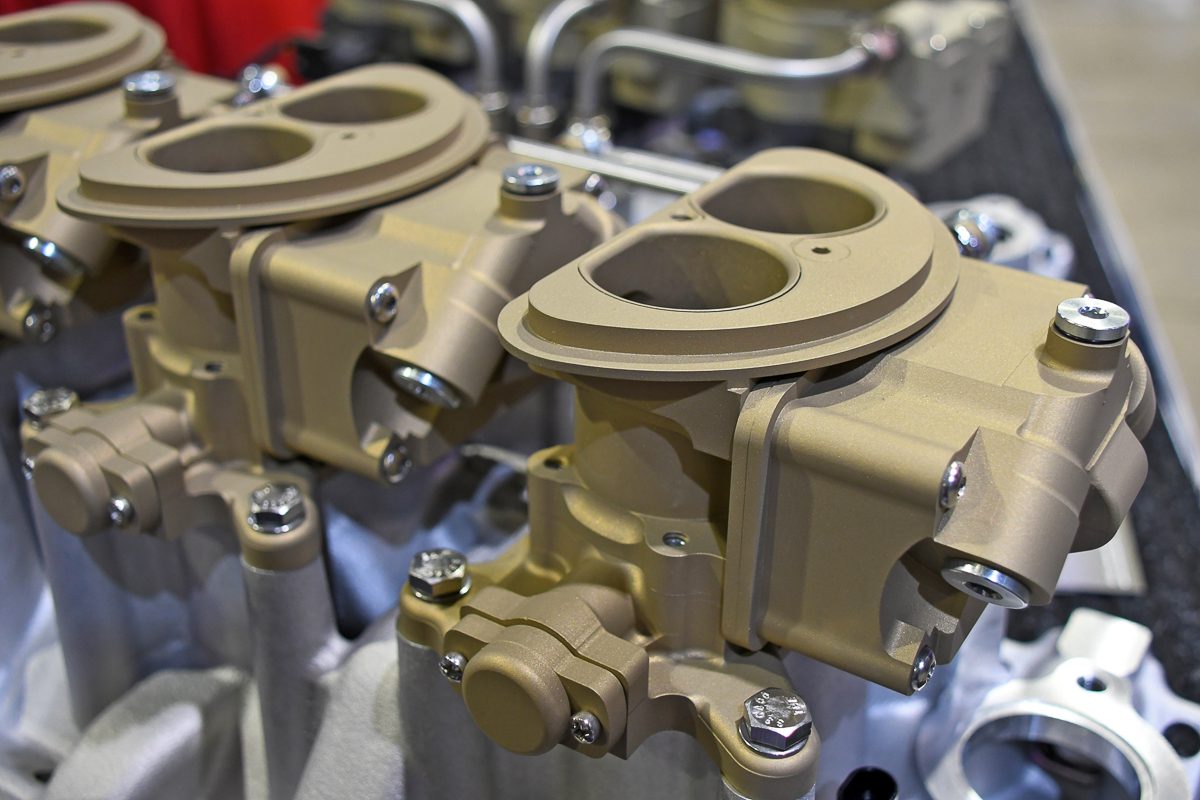
Thanks to advancements in CNC technology, CNC machines are able to create more forms, shapes and finishes compared to the blocky appearance of early components. Autotrend EFI designed and machines their throttle bodies to resemble vintage carbs such as the Strombergs or the Holley 2-barrel shown here.
The Wheel Deal
Billet wheels, those stylish rollers built using parts machined from a chunk – or billet – of aluminum, are really what brought CNC machining to the forefront of hot rodding. The first name commonly associated with billet wheels is Boyd Coddington, who felt custom cars should have their own custom wheels. His one-off wheels opened the door to fresh designs and new looks in the 1980s, followed by an entire era of swoopy rods with loads of shiny billet pieces ranging from wheels to mirrors, knobs, and license plate frames.
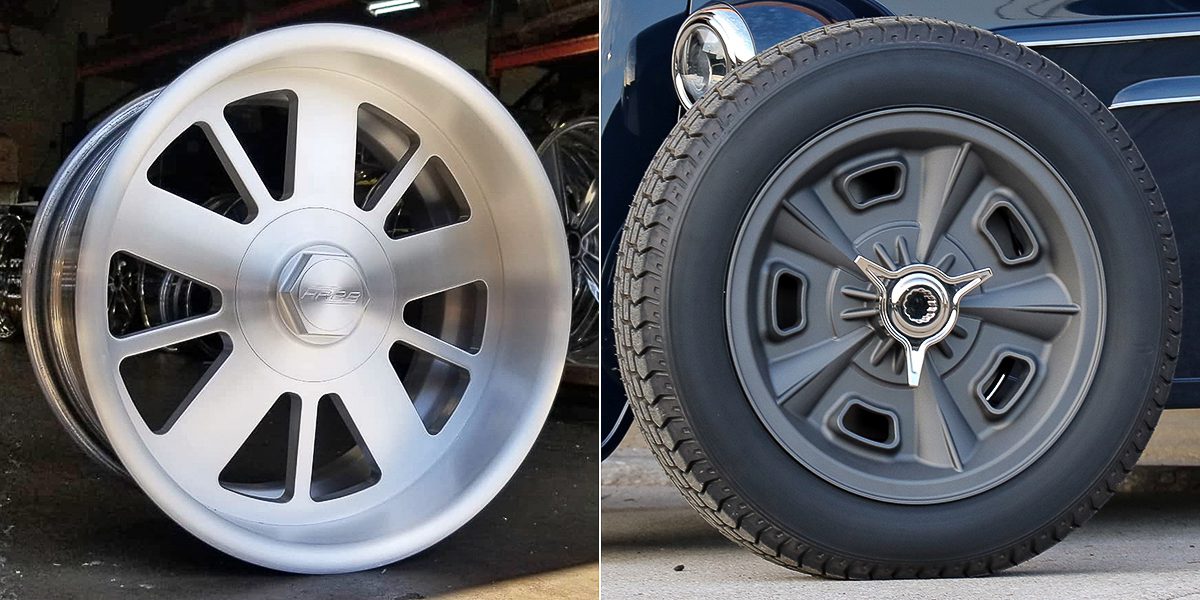
Early billet wheels were limited in design based on the CNC equipment of the time and were characterized by hard edges and squared-off designs, like this Hot Rods by Boyd Concourse model – a style that has made a comeback along with OBS trucks. Today, computer design technology and more sophisticated CNC machines have opened up the door to more intricate wheel designs, many of which look like vintage cast pieces, like these one-off wheels machined by Greening Auto Company for Jeff Breault’s ’34 Chevy roadster, Goodguys 2022 Street Rod of the Year.
At the start, these billet components were often left with a brushed finish, but enthusiasts soon began polishing them to a mirror-like sheen. Early billet parts could usually be identified by their sharp machined edges and angles simply because the CNC machines had limited capabilities. Back in the early-’90s, nobody really thought much about those hard edges because the technology was new, and the designs were cutting edge (pun intended).
“CNC machining has come a long way,” said Eric Peratt of Pinkee’s Rod Shop. “In the past, everything was 2D and very blocky, but now with 3D programming for the surface, we can machine everything to look organic or cast.”
Greening echoed that perspective. “We want that older look,” he said. “With the software today, it makes it easy. And we have secondary processes, too. You might use an old process like shot-peening, for instance. You go in after all the state-of-the-art machining gets done and throw that part into some old piece of equipment to rough it up to make it look old.”
Billet Specialties is a company that was on the forefront of the billet hot rod market and introduced its first three-piece billet wheel in 1989, followed by a two-piece design the following year, which has become an industry standard. Today the company houses 50 CNC machine tools and is at the forefront of CAM technology and design.
“The development of software has driven computers and machine tools to a higher level, enabling us to deliver new and complex products to the marketplace,” said Pat Jaeger of Billet Specialties. “Our engineers using today’s technologies can render complicated drawings of wheel styles and bring them to the shop floor in less than half of the time as before. From concept to prototype, a design can be machined in a matter of hours.”
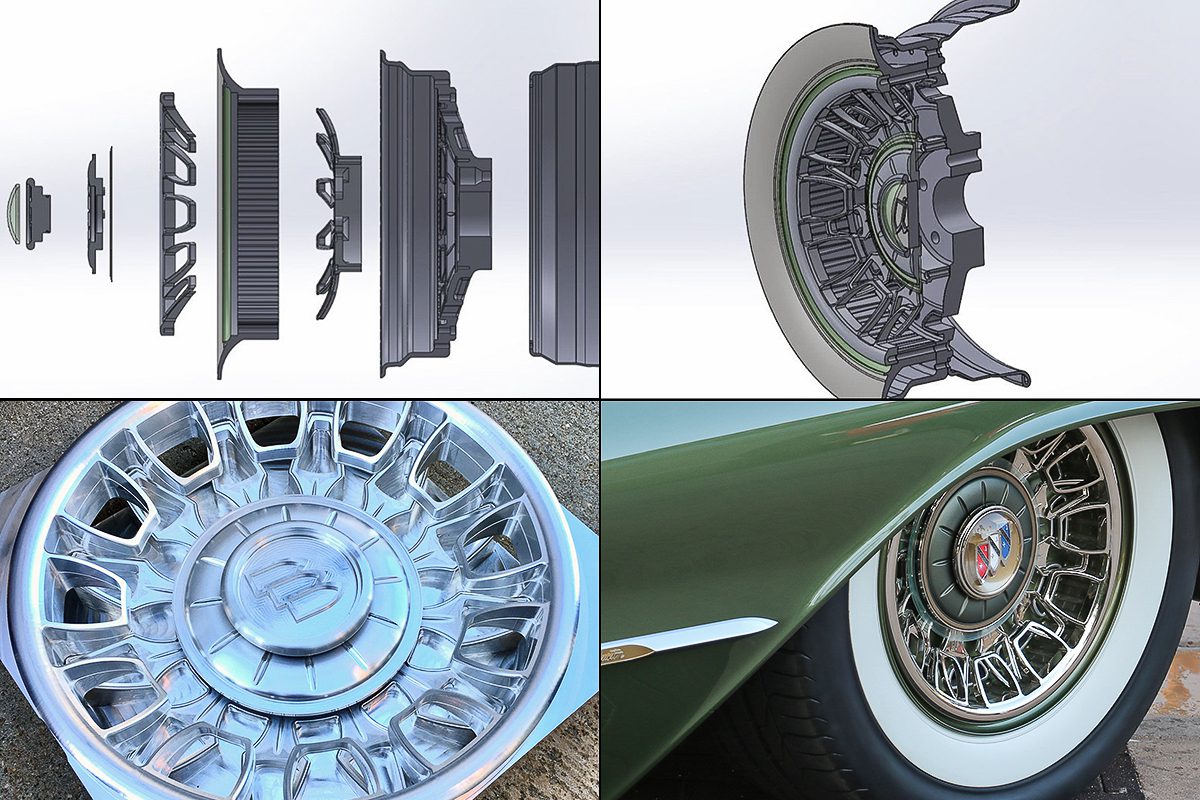
One of the most intricate custom wheel designs we’ve seen is the one used by CAL Auto Creations on the X60 Buick belonging to George Eliacostas, which won the Slonaker Award earlier this year and is a finalist for the Goodguys 2023 Custom Rod of the Year. Each wheel is built from nine interlocking components machined by Atomic Machine, with varying plated and painted finishes enhancing the design. Note that the whitewall is part of the wheel, not the tire.
In addition to familiar names like Coddington and Billet Specialties, there are many other companies now specializing in custom-design and made-to-order wheels, offering builders and designers virtually unlimited options to set their projects apart. “When I first started doing automotive designs, custom wheels were kind of unheard of,” said Eric Black of e.Black Design Co. “Now I would say that easily 90-percent of the projects I’m working on are doing one-off wheels.”
Greening said that one-off wheels are where his shop ends up investing a lot of time in computer design. “A customer might have a rendering from an artist,” Greening said, “but we need to turn that from a 2D into a 3D design, and there are a lot of design elements we need to take into account.”
Beyond Rollers
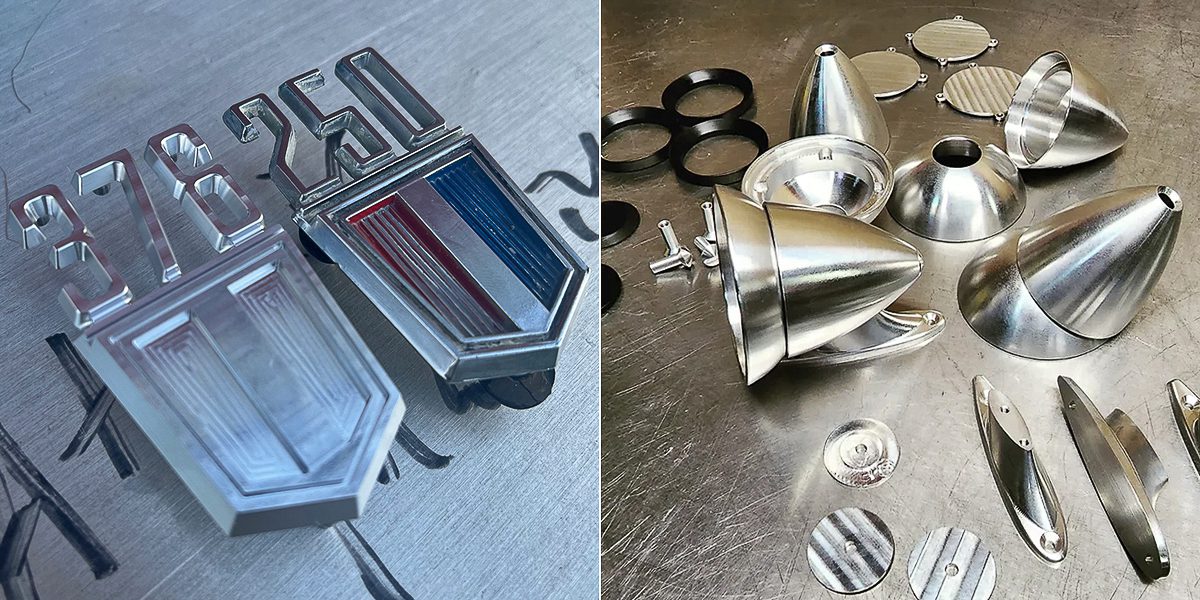
CNC machines whittle more than just wheels. Custom emblems like this badge from Atomic Machine (left) are being found on more and more builds, as are parts like these side-view mirrors made by Evod (right).
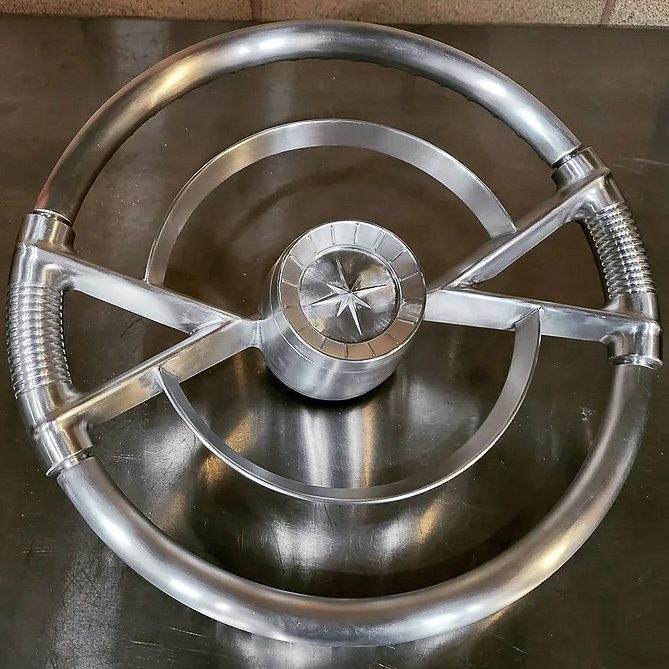
Custom-machined steering wheels like this one from Evod have allowed designers to let their imaginations run wild, or to emulate classic designs in contemporary sizes. They’re often painted and plated to deliver a look that enhances a vintage car interior, rather than standing out.
CNC machines aren’t just for wheels, though. The technology is used in many different applications, from manufacturing production parts to whittling one-off pieces for custom builds. Roadster Shop, which designs and manufactures chassis in addition to building complete cars, relies on a number of CNC machines including two HAAS mills and two lathes, a trick Ermaksan Fiber Laser to handle 15-foot long 10-gauge sheet metal for their chassis, along with a CNC press brake to bend the parts.
All these computer-based machines help to build precise components, but it takes a talented and trained individual to make sure these machines perform up to expectations. “Our most trick tools are our talented employees,” said Jeremy Gerber of Roadster Shop. “You can have some super trick machinery, but it’s only as good as the people running it.”
Heath Murray of Murray Kustom Rods, which also has multiple CNC machines, weighed in on the programming side of things. “I’m self-taught on the CNC equipment and I used to keep a pile of parts next to the mill that I referred to as my ‘education pile’ which was through trial and errors in programming the machine or the software,” Heath said. “It’s one thing to make a great-looking part, but to make one that fits and functions is another level.”
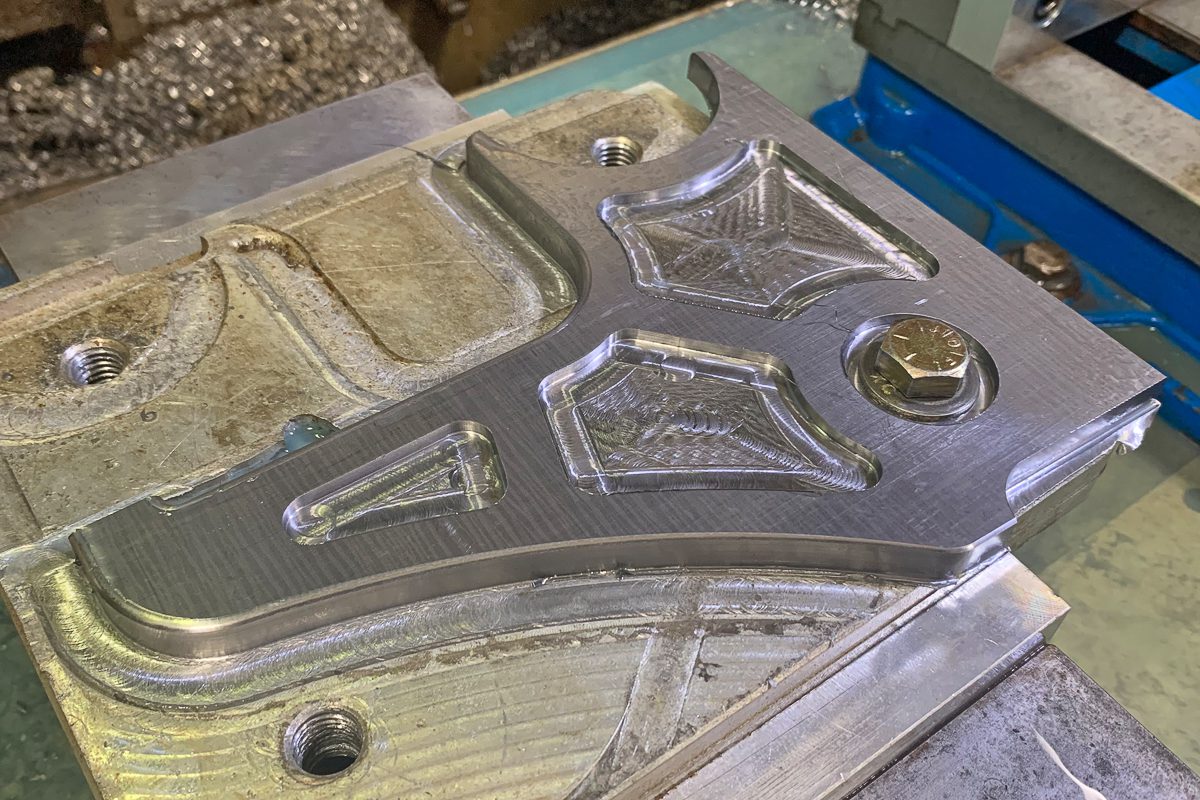
Heath Murray of Murray Kustom Rods explained that their CNC mill runs on a daily basis and is used for one-off parts for projects or for their suspension components that they manufacture and sell.
3D Printing
One form of CAD technology that we’re seeing more in the hot rod industry is 3D printing. Whereas CNC machining removes material to complete a form, 3D printing actually builds up material to create a part from a computer design. This technology is instrumental for manufacturers when it comes to R&D by being able to test fit parts, and it’s also being welcomed by builders for the same reason.

This 3D-printed exhaust manifold prototype allowed Classic Performance Products to confirm fitment and clearances before moving into production pieces.
Danny Nix, a New Product Engineer at Classic Performance Products, explained that they’ve been using 3D printing technology for more than a decade and recently upgraded to a newer model. “The new printer is so much faster and allows for a lot of different materials, including rubber for grommets or ducting, a number of different plastics of course, and even a carbon fiber hybrid combination. The new one is a Fused Deposition Modeling (FDM) which uses less material, plus can create hollow parts, which also saves time.”
While we chatted with Nix, he mentioned that he was holding a printed tubular control arm for a Chevelle that weighed well under one pound. Even with its light weight, they can still install the bushings and ball joint to test and fit the entire assembly before putting a steel version into product.
“We use our 3D printer for a number of different applications including prototyping products to qualify fitment on vehicles and even to helping build fixtures and tooling. For example, we can print a new control arm and use it to verify the welding fixtures and jigs for any small adjustments. We’re talking down to 0.002-inch in setup and specifications,” Nix said.
“I can’t even begin to tell you all of the different advantages of having a 3D printer,” Murray said. “We bought a very large one so we could prototype parts prior to machining a block of material in the mill. This way we can print a sample part that we can check on a car to make sure it will work prior to ever turning the mill on. Printing is substantially cheaper than any other CNC operation you do in the shop, so why not?”

Goolsby Customs sent us these images showing simple hose clamps being computer designed and 3D printed on their in-house printer. Parts like these are possible for DIY enthusiasts to create on smaller consumer-style 3D printers.
The Roadster Shop team also understands the importance of 3D printers. “We have a BigRep Studio printer that allows us to print large-format end-use parts,” Gerber said. “This machine has been used for printing a complete 18×12-inch custom-designed wheel to verify its fitment and style. In addition, we have a smaller inexpensive machine. The resolution is quite nice, and it works great for printing mockup parts to verify fitment prior to machining them. If you have 3D modeling capabilities, then some form of 3D printer is a must.”
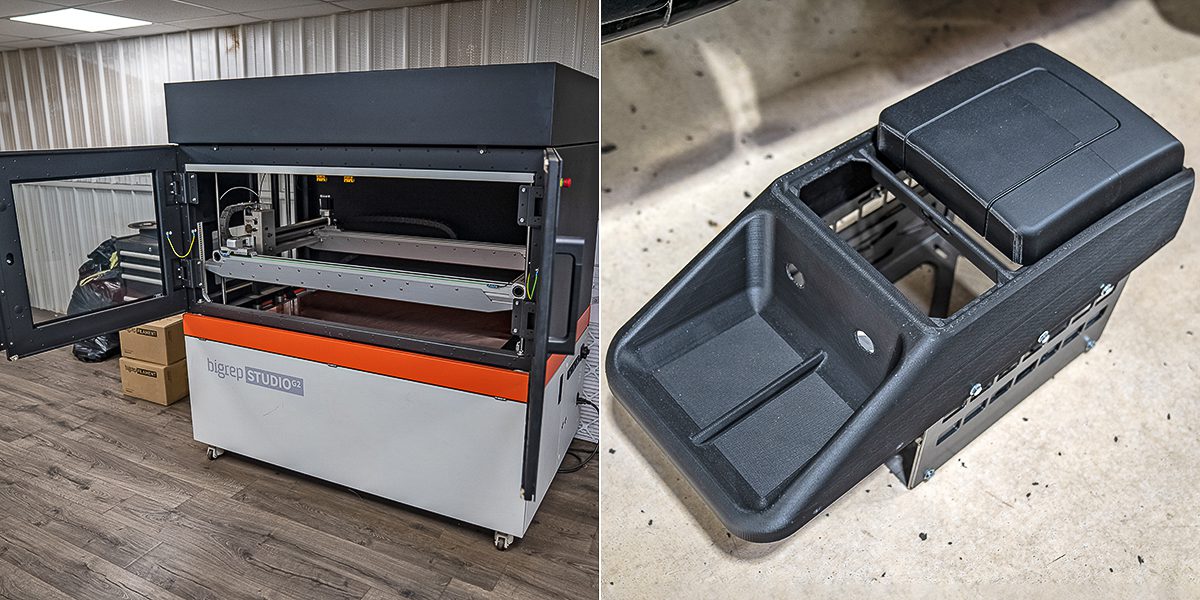
The capabilities of 3D printers provide continues to amaze – especially for shops or companies with large-capacity machines like this Big Rep Studio printer Roadster Shop has in its shop. They used it to print a custom console for a K5 Blazer after it was computer designed in-house.
CAD and 3D SCANNING
All this computer-aided design work isn’t just beneficial for creating new products. TJ Zessin, owner of Atomic Machine & Design, explained that the technology helps when there’s a need for a hard-to-find component during a restoration or a custom build.
“One of the benefits of CAD and 3D scanning is being able to build a new part out of broken pieces. This is especially helpful for crazy-rare cars where the parts are basically unavailable,” Zessin said. “We recently were able to draw up a vent window mechanism for a rare ’53 Oldsmobile Fiesta using original, broken pieces. From there, we CNC’d a new one that looks and functions exactly like the original.”
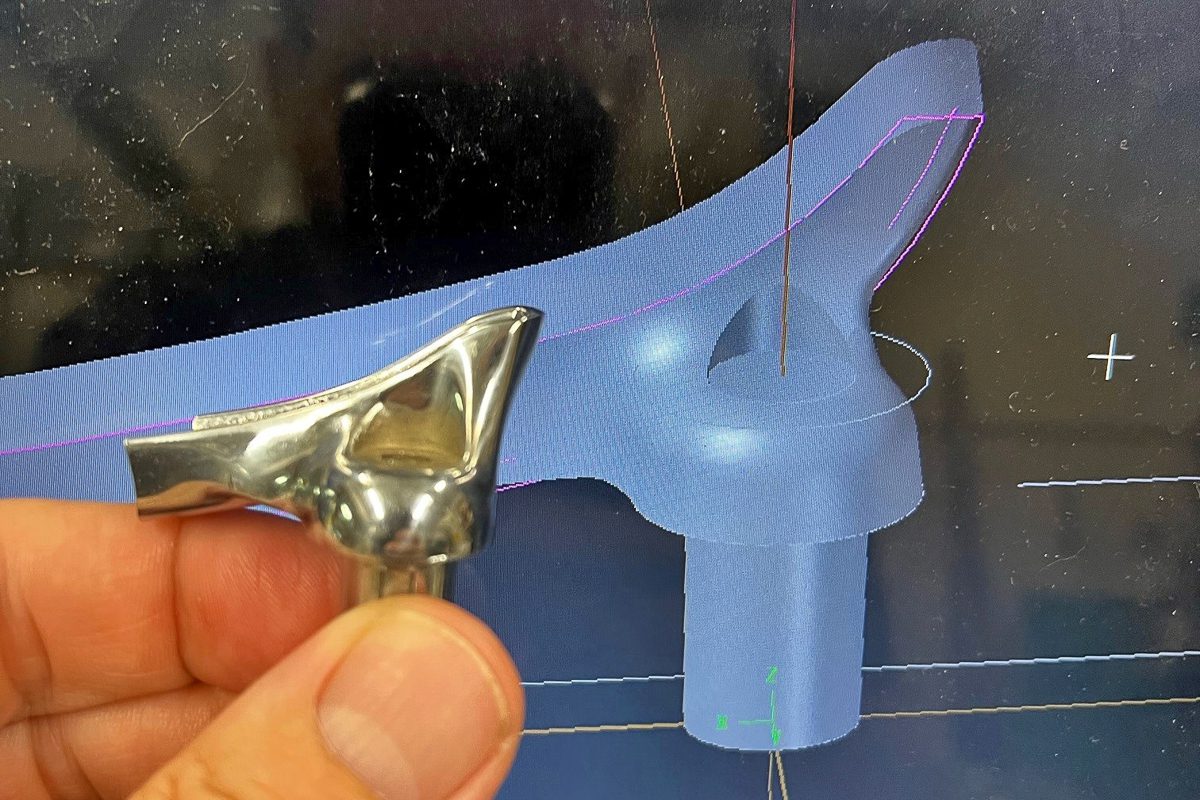
Enthusiasts and shops with extremely rare cars can benefit from CAD technology. Atomic Machine & Design has created new parts to replace broken or missing pieces. This example shows a vent window mechanism that was otherwise unobtainable.
Not only is this handy with broken or failed parts, but a designer can also use this technology to improve an existing part. “Being able to machine a factory component provides the opportunity to improve the design aesthetically and its functionality,” Peratt said.
The ability to 3D scan a component, which is basically like making a 3D model of a part or area on the computer screen, gives shops the ability to measure original components ranging from firewalls and frames to suspension parts and other components. With this information, a company or builder can design parts based on the specification, clearances, and other parameters that are crucial to form and fitment. This saves a lot of machining time and speeds up the concept-to-completion time.
And 3D scanning technology is not limited to small parts. Roadster Shop uses the technology to scan the underside of complete cars and trucks, allowing them to design and refine new frames and suspensions. This speeds up the process of new chassis development and is much more efficient than jumping right in to bending metal. The scans can also be used to plan exhaust routing and placement of other components.
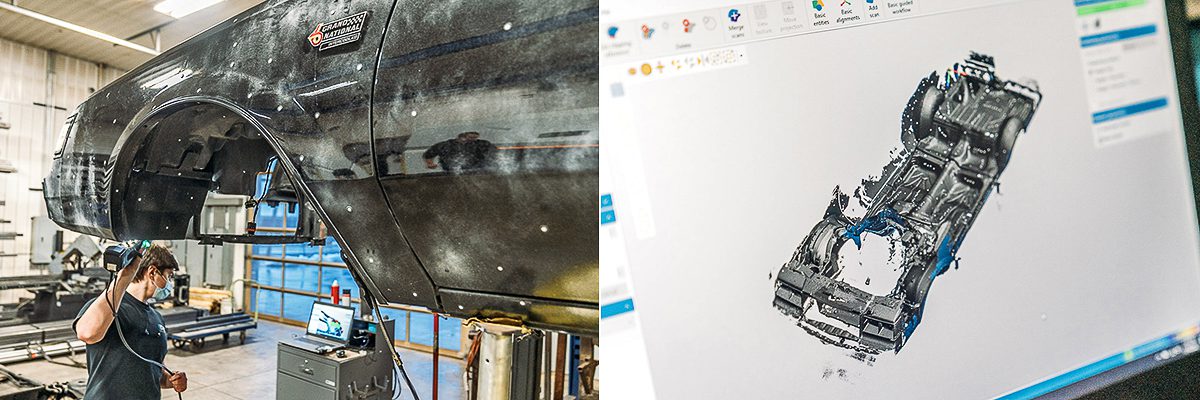
Roadster Shop uses 3D scanning technology to map the undersides of cars, which speeds up the process of designing custom frames or developing new production chassis.
Many Pros; Any Cons?
We’ve covered a lot of benefits of CAD design, printing, and machining, but are there cons to this modern technology? One common deterrent is cost. The cost of the machines alone can be substantial and either learning to use them or hiring a trained programmer/designer is not cheap. CNC machining centers cost as much as an average home, not counting the price of materials and talent.
“The technology is definitely for higher-end builds,” said Rodger Lee of Ironworks Speed and Kustom. “But it’s where it’s going, and it’ll be a while before the DIY guy will be taking advantage of it.”

Another technology topic we did not dive too deep into but can be mastered by the DIY’er is Laser Etching, which Roadster Shop is also at the forefront of with these custom badges seen on many of their recent builds.
Change is a constant when it comes to technology and these days things are moving fast. Just think about some of the builds and aftermarket components from 10-15 years ago. “It would have been unheard of back then to create CNC-machined parts to the extent that we see today,” Zessin said. “One-off, custom-machined parts for car owners is much more mainstream today.”
As the technology becomes more affordable and a generation of computer-savvy gearheads continues to take over, it seems that Computer Aided Design is not going to slow down. There are high schools with 3D printers and CAD programs, and you can find affordable, rudimentary 3D printers online for less than $500 to use at home, making it realistic for a do-it-yourselfer to try making small parts or patterns.
There are already many specialized, boutique-type companies offering services ranging from design and 3D-printing to custom machining, and we expect those numbers to keep growing. Zessin’s Atomic Machine is one of those businesses. So is Greening Auto. While Greening still builds customer cars, it’s also a go-to resource for other builders and shops to have one-off parts designed and built. Greening says more of that work is on the machining side, as many builders now have in-house designers.
“When I first started 10-15 years ago with the machining side of it, it was me getting a sketch handed to me, so I’d have to design it,” Greening said. “Now it’s commonplace to have that software in everybody’s shop. Probably 80-percent of the stuff I get now is just a CAD file someone has given me, or a scan off something, and we start from there and machine it. That’s how much it’s changed in 10 years.”
Jim Ries of CPP recently summed up the positives in this technology for manufacturers and hobbyists. “The tools we have available now on the design and manufacturing side have brought the aftermarket to the next level,” he said. “Enthusiasts are getting more for less and the products being offered today are better designed and the quality is exceptional.”
Eric Black echoed those thoughts in terms of design and custom builds. “Nowadays, to be able to machine something and have it look like it was a cast part, and really put thought into it, it doesn’t have to look like a machined billet piece. You can take it one step further and do the job as the designer and make something that’s really quite beautiful. Man, the sky’s the limit.”
3D Print it All
We were recently checking out the DS-500R ’67 Mustang built by Ironworks Speed and Kustom. While looking at build photos of the car, one thing that stood out was the volume of computer images used, ranging from the grille and hood opening to the rear of the car and a vast number of interior components. Shop owner Rodger Lee explained that they not only scanned the entire interior of the car, but also 3D printed many interior parts.
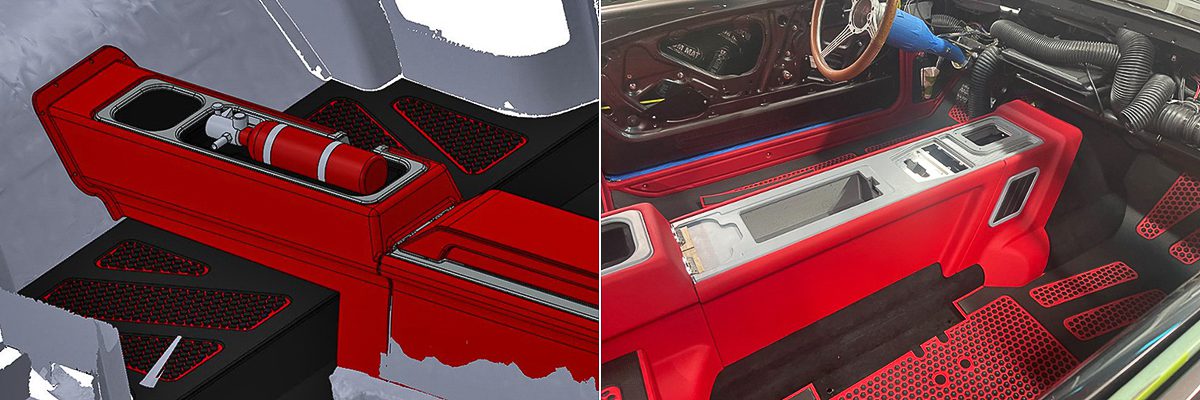
To produce the interior on their ’67 Mustang build called DS-500R, Ironworks first 3D scanned the entire interior and then started the design work on the computer monitor. From there, most pieces are 3D printed to confirm their fit and ergonomics. In the end, much of the interior uses 3D-printed components such as the console, headliner bows, dash pad, and sail panels to name a few. Other components including the door panels, armrests and handles are CNC machined from aluminum.
“We’ve been 3D printing parts on our BigRep 1 machine for about five years,” Lee said. “The machine runs pretty much constantly in our shop to print anything from a seat mount to a custom center console. We even print the outside of custom wheels just so we can confirm that the finished part looks as expected when you see it in life-size form on the car. It gives you the benefit of hindsight by being able to tweak the design prior to cutting a finished piece out of aluminum.”
For the Mustang, they started the interior by mounting the ‘must haves’ such as the steering wheel, shifter, column, and dashboard before scanning the entire interior. From there, their designers began to work their magic on the seats, door panels, consoles, roll bar, and other details. Once designed, each part could be 3D printed to test for fit, form, and function.
“One big advantage is that once the interior is scanned, you can work on its design and parts without the car,” Lee explained. “There are interior shops that we can send the Solid Works files to, and they can get started without seeing the car, which in the end, can save a lot of time in the build process. In fact, we can have a lot of parts designed, made, and ready to install long before we need them.”
Photos courtesy of the Manufactures mentioned in the article


